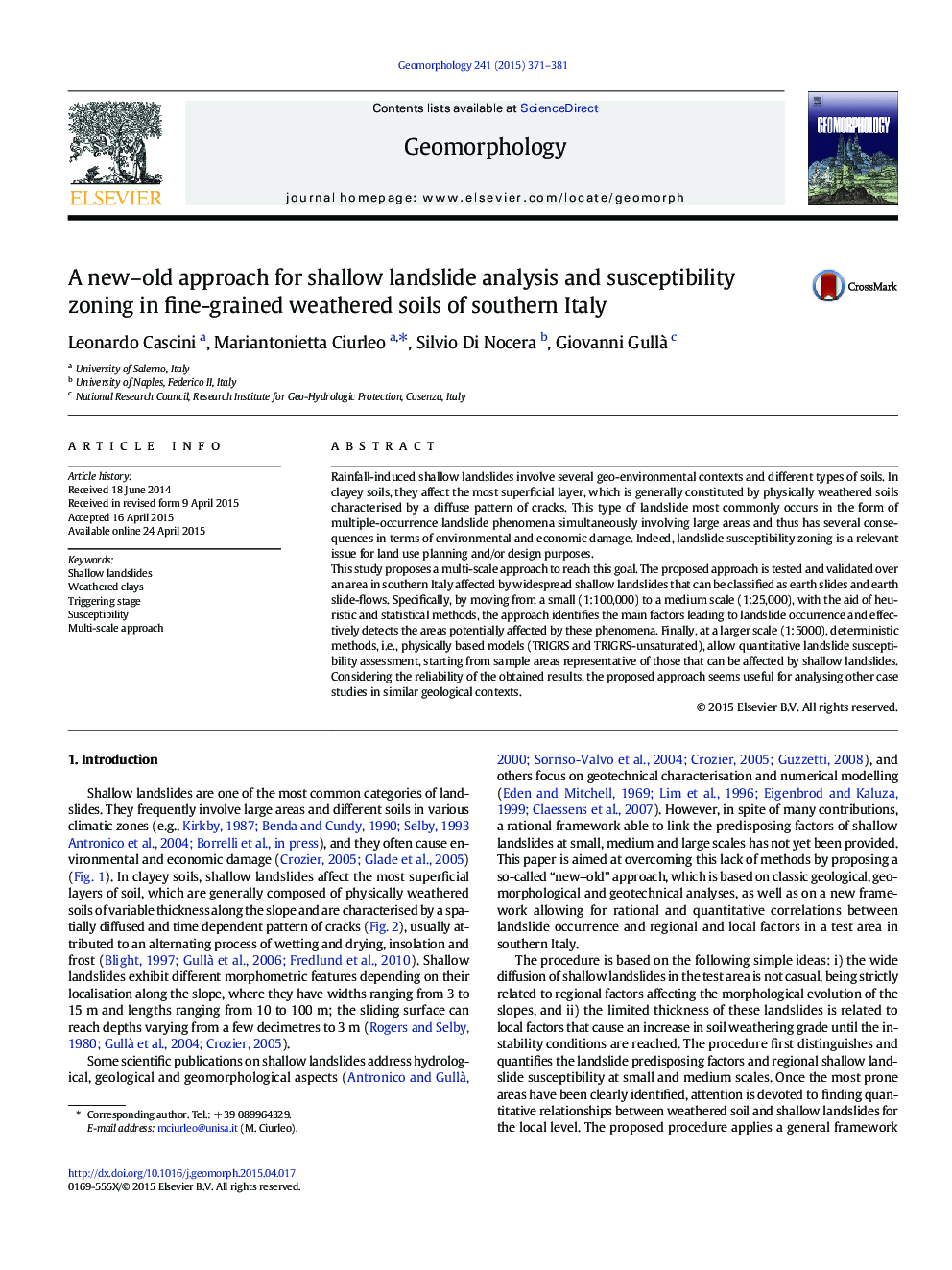| Article ID | Journal | Published Year | Pages | File Type |
|---|---|---|---|---|
| 6432173 | Geomorphology | 2015 | 11 Pages |
â¢The literature of shallow landslides in weathered clayey soils is analysed.â¢A multi-scale approach is then proposed to assess landslide susceptibility zoning.â¢The results highlight the possibility of using this approach in other similar contexts.
Rainfall-induced shallow landslides involve several geo-environmental contexts and different types of soils. In clayey soils, they affect the most superficial layer, which is generally constituted by physically weathered soils characterised by a diffuse pattern of cracks. This type of landslide most commonly occurs in the form of multiple-occurrence landslide phenomena simultaneously involving large areas and thus has several consequences in terms of environmental and economic damage. Indeed, landslide susceptibility zoning is a relevant issue for land use planning and/or design purposes.This study proposes a multi-scale approach to reach this goal. The proposed approach is tested and validated over an area in southern Italy affected by widespread shallow landslides that can be classified as earth slides and earth slide-flows. Specifically, by moving from a small (1:100,000) to a medium scale (1:25,000), with the aid of heuristic and statistical methods, the approach identifies the main factors leading to landslide occurrence and effectively detects the areas potentially affected by these phenomena. Finally, at a larger scale (1:5000), deterministic methods, i.e., physically based models (TRIGRS and TRIGRS-unsaturated), allow quantitative landslide susceptibility assessment, starting from sample areas representative of those that can be affected by shallow landslides. Considering the reliability of the obtained results, the proposed approach seems useful for analysing other case studies in similar geological contexts.
